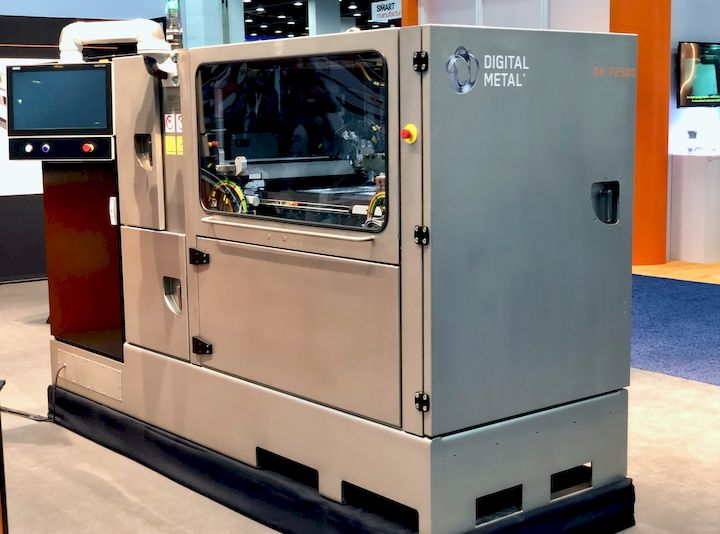![One of Digital Metal’s high-precision metal 3D printers [Source: Fabbaloo]](https://fabbaloo.com/wp-content/uploads/2020/05/image-asset_img_5eb091227e119.jpg)
Digital Metal announced two new superalloys for use in their metal 3D printers, and I think this is a very interesting beginning.
There’s a few things to understand before we get into the new materials. First, Digital Metal’s 3D printing process is a bit different. While most metal 3D printers use a powder bed / laser process in which the laser creates a small moving meltpool, Digital Metal’s process involves binder jetting. The parts are 3D printed with binder without heat. Then, after printing, the object is heated in a furnace to burn off the binder and sinter the metal particles together.
The second thing to understand is that Digital Metal is actually a subsidiary of Höganäs Group, a Swedish company that has produced metal powder for industry for decades. Other subsiduaries of Höganäs Group actually produce the powder used in Digital Metal’s equipment.
![Small metal parts made on Digital Metal’s high precision metal 3D printers [Source: Fabbaloo]](https://fabbaloo.com/wp-content/uploads/2020/05/image-asset_img_5eb09122d35a8.jpg)
Digital Metal Stainless Steel
The Digital Metal 3D printer previously used only the more common stainless steel 316L & 17-4PH and Ti6Al4V metals. These materials are frequently used in other metal 3D printers.
Now they have announced the addition of two superalloys. A superalloy is a specialized metal that exhibits extraordinary performance in one or more engineering properties. The new introductions are called DM 247 and DM 625.
Wait, you’re not familiar with these two metals? That’s not surprising, because they are brand new superalloys custom-designed by Höganäs Group.
DM 625 is an Inconel 625-grade material, but the DM 247 material is far more interesting, because it’s a non-weldable material.
3D Printing Non-Weldable Metals
Let’s think about this for a second: powder bed / laser metal 3D printers essentially use a welding process to fuse material. The moving meltpool literally heats the powdered metal to the melting point where it swiftly cools and solidifies after the laser passes by.
A non-weldable material is chemically difficult or impossible to weld. For example, if an alloy contained a significant amount of carbon, that carbon might be burnt off during welding (or lasering), changing the chemical state of the alloy after the powder is fused. Thus such a material is not weldable nor 3D printable — in powder bed laser systems.
That’s where Digital Metal has a significant advantage: their 3D printing process does not involve heat. The non-weldable material can be 3D printed with ease, and then carefully sintered at the precise temperatures to avoid chemical alteration. The other advantage of the sintering process is that heating is done all at the same temperature throughout the part, thus avoiding temperature gradients and warping effects that can plague other approaches.
Digital Metal’s Advantage
So it seems that Digital Metal has a significant advantage here: they can 3D print many non-weldable materials successfully, and they have their own materials.
Since the sources of the powder and the 3D printer manufacturing are essentially the same company, they can now create unique materials that, if they choose, could be used only on their own equipment. This opens up the possibility of a future “war” between metal 3D printer vendors over unique materials.
The advantage may pass to metal 3D printer companies having strong partnerships or ownership of metal powder producers.
Via Digital Metal

